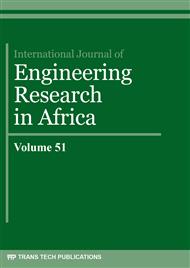p.15
p.29
p.45
p.57
p.71
p.79
p.95
p.111
p.131
Retrofitting of Cracked and Damaged Walls of Historical Buildings with Reinforced Concrete Materials
Abstract:
The historical building which can reflect the local history and culture of a city is the wealth of all mankind, but after the baptism of time, the historical building has been damaged by nature or man. In order to preserve the historical buildings and the culture contained therein, the damaged historical buildings need to be reinforced and restored. In this study, ABAQUS finite element software was used to simulate and analyze the reinforcement and repair effects of four kinds of damage states (mild damage, moderate damage, severe damage, and nearly collapse) of historical building walls caused by reinforced mesh cement. The results showed that in the case of mild damage, moderate damage and severe damage, the ultimate load displacement of the wall was raised in different degrees (the ultimate load and displacement were 200 kN and 4 mm respectively in case of mild damage and were 400 kN and 8 mm respectively after reinforcement; the ultimate load and displacement were 210 kN and 4 mm respectively in case of moderate damage and were 400 kN and 6 mm respectively after reinforcement; the ultimate load and displacement were 150 kN and 4 mm respectively in case of severe damage and were 375 kN and 7 mm respectively after reinforcement) and restored or even exceeded the performance of the wall without damage by using the reinforced mesh cement layer. In the nearly collapse wall, the ultimate load and displacement of the wall could be improved, but the performance of the wall could not be recovered as it was before being damaged (40 kN and 3 mm before reinforcement, and 165 kN and 6 mm after reinforcement). Reinforced reticulated concrete can be used to reinforce and repair historic buildings with mild, moderate and severe wall cracking, but it is not suitable for the reinforcement and restoration of cracked historical buildings which are nearly collapsing.
Info:
Periodical:
Pages:
71-78
Citation:
Online since:
November 2020
Authors:
Keywords:
Price:
Сopyright:
© 2020 Trans Tech Publications Ltd. All Rights Reserved
Share:
Citation:


